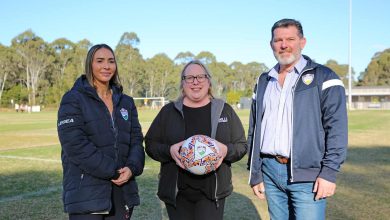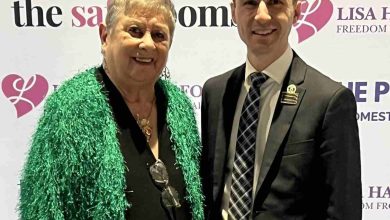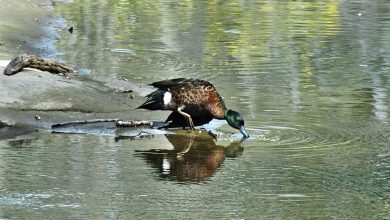Our Own Pilgrim Fathers Of The Hills and Hawkesbury Region
 The United States may well celebrate the Pilgrim Fathers who sailed across the Atlantic from England to America in the “Mayflower”.
The United States may well celebrate the Pilgrim Fathers who sailed across the Atlantic from England to America in the “Mayflower”.
Here, in our neck of the woods of the Hills and Hawkesbury region, we recognise a similar group of people who sailed from Deptford, England on board the “Coromandel” on 12th February 1802 heading for the Colony of New South Wales arriving on 13th June 1802 in the, then record, time 121 days (when average time was 175 days of sea travel).
On board the “Coromandel” were a party of passengers who were members of the congregation of the Crown Court Church of Scotland located at Covent Garden, London.
After serving a short period of time at the Government Farm located at Toongabbie, they were given land grants along the Hawkesbury region in the area known as Portland Head (now called Ebenezer). They were then joined by seven other newly arrived families.
Both groups were deeply religious and as there was no established church in the district they met and held religious services under a tree situated on a piece of ground which they named Ebenezer Mount. Remains of the tree still stand across the road from Ebenezer Church forming a new canopy after several storm damage events. The services were conducted by James Mein, one of the settlers from the “Coromandel”.
Although there were, what we now call Anglicans, amongst the congregation most of the settlers were non-conformist motivated by a desire of freedom of worship and independence, coming from Scotland and Wales where they did not have religious, social and legal status as Anglicans.
Also in this period there were limitations in politics and commerce for the non-English and so many enterprising Scots and Welsh headed to the colonies where they found greater independence.
The citizens at Portland Head also involved themselves in political happenings in New South Wales by supporting Governor Bligh during the Rum Rebellion. They had petitioned for reinstatement of the Governor which was unsuccessful resulting in Lieutenant Bell with a detachment of troops marching from Windsor to Ebenezer Mount at Portland Head.
When he arrived he found the congregation engaged in worship. After the conclusion of the service Lt. Bell shook hands with each member of the congregation and advised that he was satisfied with the orderly conduct of the meeting and that he would neither disperse nor interfere with their meeting.
The church, which is the oldest continuous church in Australia, was constructed in 1809 following a meeting of residents of the Portland Head community held at “Hope Farm” on the other side of the Hawkesbury, opposite the current site of where the church now stands.
This meeting was held on the 26th September 1808. Whilst the church is reputed to be the oldest church in Australia it was not the first church to be built as there were churches in Sydney and Parramatta which were built earlier.
The first church constructed in Australia constructed in 1793 was a wattle and daub building that held 500 persons located at what is now the corner of Bligh and Hunter Streets, Sydney which was destroyed by a deliberately lit fire in 1798.
After the loss of this church, Governor Hunter decided that a more substantial church be built at Church Hill in what is now Lang Park and was finished in 1810 and called St Phillips. St. Phillips was deemed unsuitable by 1845 and was dismantled and a new St Phillips was completed in 1856.
A similar situation occurred in Parramatta with St Johns originally being constructed in 1803 and later dismantled 1852 being replaced by a new larger St. Johns.
The first wedding ceremony at Ebenezer Church brought together two of the pioneering families of the Hawkesbury region when Matilda Grono, daughter of John (a Welshman) and Elizabeth Grono married William Wiseman, eldest son of Solomon Wiseman of Wiseman’s Ferry fame.
For the first twenty years following construction, Ebenezer Church was a non-denominational church although the congregation sought to have ministers appointed by the London Missionary Society. The said society did not respond to the settlers’ requests, so the church operated as a non-denominational church serving all Christians alike.
In 1824 The Rev. John Garvie of the Presbyterian Church assumed the role of Minister at Ebenezer making Ebenezer Church the first Presbyterian Church in the Colony.
From that time, up to 1977, it remained as a Presbyterian Church when the congregation of both Ebenezer and Scots Church Pitt Town agreed to join the new Uniting Church movement whilst still maintaining links with the Presbyterian Church. Ebenezer and Scots Church Pitt Town share the same congregation, Minister, and management committee.
The name Ebenezer is a Biblical name chosen for the church and, thus, the village adjoining the church took the name from I Samuel VII, Verse 12:
“Then Samuel took a stone and set it up between Mispah and Jeshanah and called its name Ebenezer, for he said “Hitherto the Lord has helped us”.











